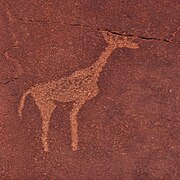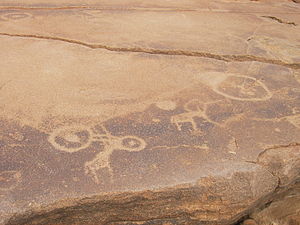Twyfelfontein
|
Twyfelfontein ( afrikaansavon Twyfelfontein ), tir burkaf debak ke Namibia. Twyfelfontein tir tano katcalapafo izvaxo ke tawava nume bak 2007 wetce arayaf debak ke tamavafa gadakiewega ke UNESCO zo bendeyer.
 Twyfelfontein va tan lozolonaf avplekuks dem raporaf gretcaks koe Afrika ruldar. Lo bat grabom nendanyayan va beicekol is fuzol is waikoy is kustrol volad, is dere va conyuta ke ayafa ik sulemafa bora. Debak va tevoya buta yunkeyena gu ayaf kaatoeks kan kerafa varka dere ruldar. Koafizayana stabrega koe toloy pak ke debak gu tena ke Lekeraporugal zo evlayad. Debak va sapafa is zolonafa is dugafa belca tazukar, i va belca vrutasa va migafa ksubera ke yestatcabanesikafa doda koe bati ki ke geefa Afrika remi icle toloya decitda. Va gluya is skeda wal migafa ksubera isu skapafa ke yestatcabanesik uiveon divnedir. UNESCO : Twyfelfontein (en) Twyfelfontein or /Ui-//aes has one of the largest concentrations of petroglyphs, i.e. rock engravings in Africa. Most of these well-preserved engravings represent rhinoceros. The site also includes six painteelephant, ostrich and giraffe, as well as drawings of human and animal footprintsd rock shelters with motifs of human figures in red ochre. The objects excavated from two sections, date from the Late Stone Age. The site forms a coherent, extensive and high-quality record of ritual practices relating to hunter-gatherer communities in this part of southern Africa over at least 2,000 years, and eloquently illustrates the links between the ritual and economic practices of hunter-gatherers. ~ UNESCO website, licence CC-BY-SA IGO 3.0
Ewava va debak[betara | va krent betá]
Vuestexa[betara | va krent betá]
|
| ||||||||||||||||||||||||||||||||||||||||




















